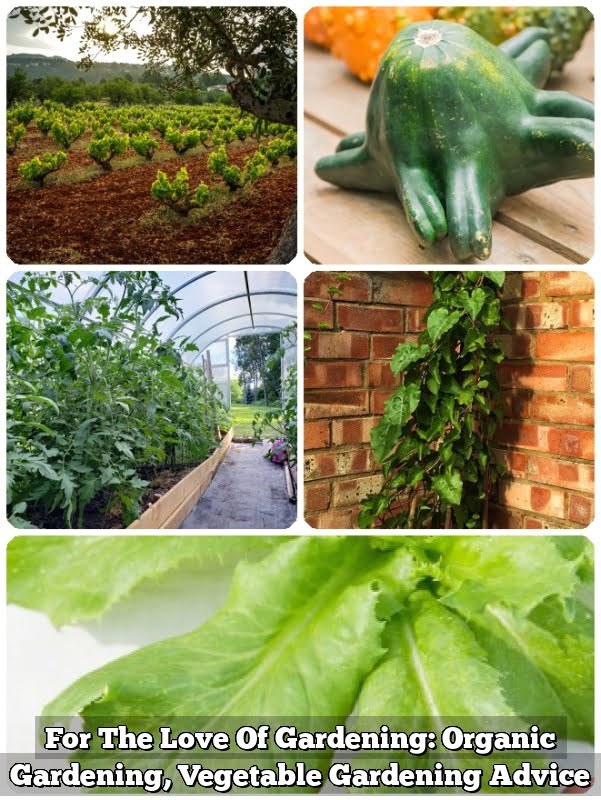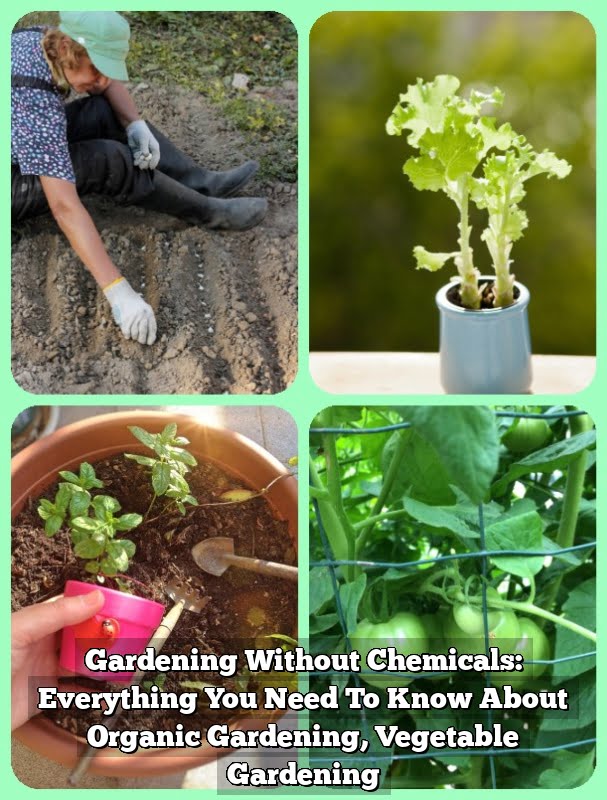Have you ever thought about starting your own vegetable garden but didn’t know where to begin? If so, you’ve come to the right place.
This article will serve as an introduction to vegetable gardening, providing you with a comprehensive overview of what it takes to start and maintain a successful garden. From choosing the right location for your garden to harvesting and storing your homegrown vegetables, we’ll cover everything you need to know to get started on your gardening journey.
Understanding the basics of vegetable gardening is essential before diving into this rewarding activity. In this section, we will discuss the key aspects of vegetable gardening, including selecting the perfect vegetables for your garden, preparing the soil for planting, and dealing with common pests and diseases that may affect your crops. By gaining a thorough understanding of these fundamental principles, you’ll be well-equipped to create a thriving vegetable garden of your own.
In subsequent sections, we’ll delve into more specific topics such as choosing the right location and designing your garden, as well as planting and caring for your vegetables. Whether you’re a beginner looking to try your hand at gardening for the first time or an experienced gardener seeking new tips for success, this article will provide valuable insights to help you achieve a healthy and bountiful vegetable garden.
So let’s get started on this exciting journey towards growing your own delicious produce at home.
Choosing the Right Location and Designing Your Garden
When it comes to starting a vegetable garden, choosing the right location and designing your garden plays a crucial role in the success of your harvest. The first step is to find a spot that receives ample sunlight, usually at least 6-8 hours per day. Most vegetables require plenty of sun to thrive, so selecting a sunny location is essential.
In addition to sunlight, it’s important to consider the quality of the soil and the availability of water. The soil should be well-draining, rich in organic matter, and with good fertility. It’s also important to have access to water for irrigation, whether through a nearby water source or with the use of hoses or sprinklers.
Once you’ve found the perfect location for your vegetable garden, it’s time to start designing it. Consider the layout and size of your garden based on the vegetables you want to grow and how much space they will need. You can design raised beds, traditional rows, or even container gardens depending on your available space and personal preference.
By carefully choosing the right location and putting thought into designing your vegetable garden, you’ll be setting yourself up for success from the very beginning. With proper planning and consideration of these factors, you’ll be well on your way to creating a thriving garden full of delicious homegrown vegetables.
Selecting the Perfect Vegetables for Your Garden
When it comes to vegetable gardening, one of the most exciting steps is choosing the perfect vegetables to grow in your garden. Whether you are a beginner or have some experience with gardening, selecting the right vegetables can make a huge difference in the success of your garden. Here are some tips for choosing the perfect vegetables for your garden:
- Consider Your Climate: Before selecting which vegetables to grow, it’s important to consider your climate and growing season. Certain vegetables thrive in specific climates and seasons, so be sure to choose vegetables that are suitable for your region.
- Choose Vegetables You Enjoy: It’s important to grow vegetables that you and your family enjoy eating. Consider the types of vegetables that you frequently use in cooking or enjoy eating raw, and prioritize those when selecting what to plant.
- Plan for Variety: A diverse selection of vegetables can make your garden more visually appealing and provide a wider range of nutrients. Consider planting a mix of leafy greens, root vegetables, herbs, and other favorites.
Once you have considered these factors, it’s time to start planning out which specific vegetables you want to include in your garden. Some popular choices for beginner vegetable gardeners include tomatoes, cucumbers, carrots, lettuce, bell peppers, and zucchini. Ultimately, the key is to choose a variety of vegetables that suit your tastes and climate while also providing interest and diversity in your garden.
Remember that each vegetable has its own unique requirements for sunlight, water, and care, so be sure to research individual plants before making your final selections. With careful planning and consideration of these factors, you can ensure a successful and satisfying harvest from your vegetable garden.
Preparing the Soil for Planting
One of the key aspects of successful vegetable gardening is preparing the soil for planting. Before you start sowing your chosen vegetables, it’s crucial to ensure that your soil provides the right environment for healthy plant growth. The first step in this process is to test your soil’s pH level. You can do this with a simple DIY test kit available at gardening stores or by sending a sample to a professional lab.
Once you have determined your soil’s pH level, you can make any necessary adjustments by adding materials such as lime to raise the pH or sulfur to lower it. Additionally, it’s important to enrich the soil with organic matter like compost, well-rotted manure, or leaf mould. This helps improve soil structure, fertility, and water retention – all of which are essential for healthy plant growth.
Finally, consider using mulch in your vegetable garden to help keep weeds at bay, maintain moisture levels, and stabilize soil temperature. Mulch also adds organic matter to the soil as it breaks down over time. By taking these steps to prepare your garden’s soil before planting, you’ll be setting the stage for a successful and bountiful harvest of homegrown vegetables.
| Soil Preparation Steps | Details |
|---|---|
| Test Soil pH | Determine if adjustments are needed. |
| Add Organic Matter | Enrich the soil with compost or manure. |
| Use Mulch | Maintain moisture levels and suppress weeds. |
Planting and Caring for Your Vegetables
Once you have selected the perfect location and designed your vegetable garden, it’s time to start planting and caring for your vegetables. This is an essential step in your journey into vegetable gardening as it sets the stage for a successful harvest. In this section, we will discuss the best practices for planting your vegetables and providing them with the care they need to thrive.
Planting Your Vegetables
When it comes to planting your vegetables, it’s important to follow the recommendations on the seed packets or plant labels regarding spacing and depth. Different types of vegetables require different planting techniques, so be sure to read up on each specific variety before getting started. Additionally, consider using a good-quality compost or fertilizer to give your vegetable plants a healthy start.
Caring for Your Vegetables
Caring for your vegetables involves regular watering, weeding, and monitoring for any signs of pests or diseases. Watering is crucial, especially during dry periods, as most vegetables require consistently moist soil to thrive. Weeding is also important to prevent competition for nutrients and reduce the risk of disease. Regular inspections of your plants will allow you to detect any pest or disease issues early on, enabling you to take action before they become a serious problem.
Providing Support
Some vegetables, such as tomatoes, cucumbers, and beans, may require support as they grow. Consider using trellises, stakes, or cages to provide support for these types of plants. By doing so, you can prevent damage from heavy fruits or vines dragging on the ground while also making harvesting easier. Proper support can also improve air circulation around the plants, reducing the risk of diseases such as mildew.
By following these guidelines for planting and caring for your vegetables, you can set yourself up for a successful vegetable garden filled with bountiful produce that will reward you with fresh and delicious meals throughout the season.
Dealing With Common Pests and Diseases
After carefully planting and caring for your vegetables, it can be disheartening to discover that pests or diseases have taken hold in your garden. However, with the right knowledge and strategies, you can effectively manage these challenges to ensure that your plants remain healthy and productive.
One of the most important steps in dealing with pest and disease issues is to identify the specific problem affecting your plants. Some common pests in vegetable gardens include aphids, caterpillars, and snails, while diseases such as powdery mildew and blight can also pose significant threats. By closely observing your plants and researching common symptoms, you can quickly diagnose any issues that arise in your garden.
Once you have identified a pest or disease problem, it’s essential to take action promptly. There are various methods for managing pests and diseases in a vegetable garden, including natural remedies like homemade insecticidal soaps or companion planting to deter harmful insects. For diseases, proper sanitation practices such as removing affected plant parts and avoiding overhead watering can help prevent the spread of pathogens.
In addition to proactive management strategies, practicing good gardening habits can help reduce the risk of pest and disease issues in the first place. This includes maintaining healthy soil through proper fertilization and watering practices, as well as implementing crop rotation to minimize the buildup of pathogens in the soil.
By taking these preventative measures and staying vigilant for signs of trouble, you can effectively deal with common pests and diseases in your vegetable garden while promoting a thriving growing environment.
Harvesting and Storing Your Homegrown Vegetables
After months of hard work and dedication, the time has finally come to harvest the fruits of your labor in your vegetable garden. Harvesting and storing your homegrown vegetables is an exciting and rewarding process that marks the culmination of all your efforts. In this section, we will discuss the best practices for harvesting and storing your vegetables to ensure that they retain their freshness and flavor for as long as possible.
Knowing When to Harvest
One of the most crucial aspects of harvesting vegetables is knowing when they are ready to be picked. Each type of vegetable has its own specific indicators for when it is ripe for harvesting.
For example, tomatoes should be harvested when they are fully colored and slightly firm to the touch, while lettuce should be harvested before it bolts and becomes bitter. It is essential to familiarize yourself with the particular signs of ripeness for each vegetable in your garden to ensure that you pick them at their peak flavor and quality.
Harvesting Techniques
When it comes to actually harvesting your vegetables, using the proper techniques is important to avoid damaging the plants and compromising their quality. Tools such as sharp pruners or scissors should be utilized for cutting, while gentle twisting or pulling may be suitable for other types of vegetables like root crops. Additionally, handling the harvested vegetables with care and avoiding bruising or rough handling is crucial in preserving their freshness.
Storing Your Vegetables
Once you have successfully harvested your homegrown vegetables, proper storage is key to maintaining their freshness and flavor. Some vegetables such as onions, potatoes, and winter squash require curing before storage, while others like leafy greens need to be stored in a cool, humid environment.
Understanding the specific storage requirements for each type of vegetable will help prolong their shelf life and prevent spoilage. Whether you choose to store them in a root cellar, refrigerator, or pantry, ensuring proper temperature and humidity levels will greatly impact the longevity of your homegrown harvest.
Tips for Success
In conclusion, vegetable gardening is a rewarding and fulfilling activity that can provide you with a bountiful harvest of fresh and nutritious produce. By following the steps outlined in this article, from understanding the basics of vegetable gardening to selecting the right location, choosing the perfect vegetables, and preparing the soil for planting, you can set yourself up for success.
Planting and caring for your vegetables, dealing with pests and diseases, as well as harvesting and storing your homegrown produce are all important aspects of maintaining a healthy and thriving garden.
One key takeaway is the importance of ongoing maintenance to ensure the continued growth and productivity of your vegetable garden. Regular watering, weeding, and monitoring for pests and diseases are essential tasks that should not be overlooked. Additionally, staying informed about gardening best practices and implementing proper techniques for fertilizing and soil management will contribute to the overall health of your garden.
Finally, it’s crucial to stay patient and dedicated to your vegetable garden. Gardening is a learning process, and there may be challenges along the way. With perseverance and a willingness to adapt, you can overcome obstacles and enjoy the abundance of homegrown vegetables that result from your efforts. Remember that with time and experience, you will become more adept at maintaining a successful vegetable garden that will provide you with delicious produce for years to come.
Frequently Asked Questions
How Do You Start a Vegetable Garden From Scratch?
To start a vegetable garden from scratch, first consider the location and size of the garden. Then, prepare the soil by removing any weeds and adding compost. Next, choose easy-to-grow vegetables and plant according to the instructions on the seed packets.
How Do I Start Learning About Gardening?
If you want to start learning about gardening, consider reading books or online articles about gardening basics. You can also join a local gardening club or attend workshops to learn from experienced gardeners. Hands-on experience is also valuable – start with simple plants and learn as you go.
What Vegetables Can a Beginner Gardener Grow?
As a beginner gardener, it’s best to start with easy-to-grow vegetables such as lettuce, tomatoes, cucumbers, zucchinis, green beans, and radishes. These vegetables require minimal care and have a good chance of success for those new to gardening. Once you gain more experience, you can expand to more challenging plants.

If you’re looking to get into vegetable gardening, or are just looking for some tips on how to make your current garden better, then you’ve come to the right place! My name is Ethel and I have been gardening for years. In this blog, I’m going to share with you some of my best tips on how to create a successful vegetable garden.





